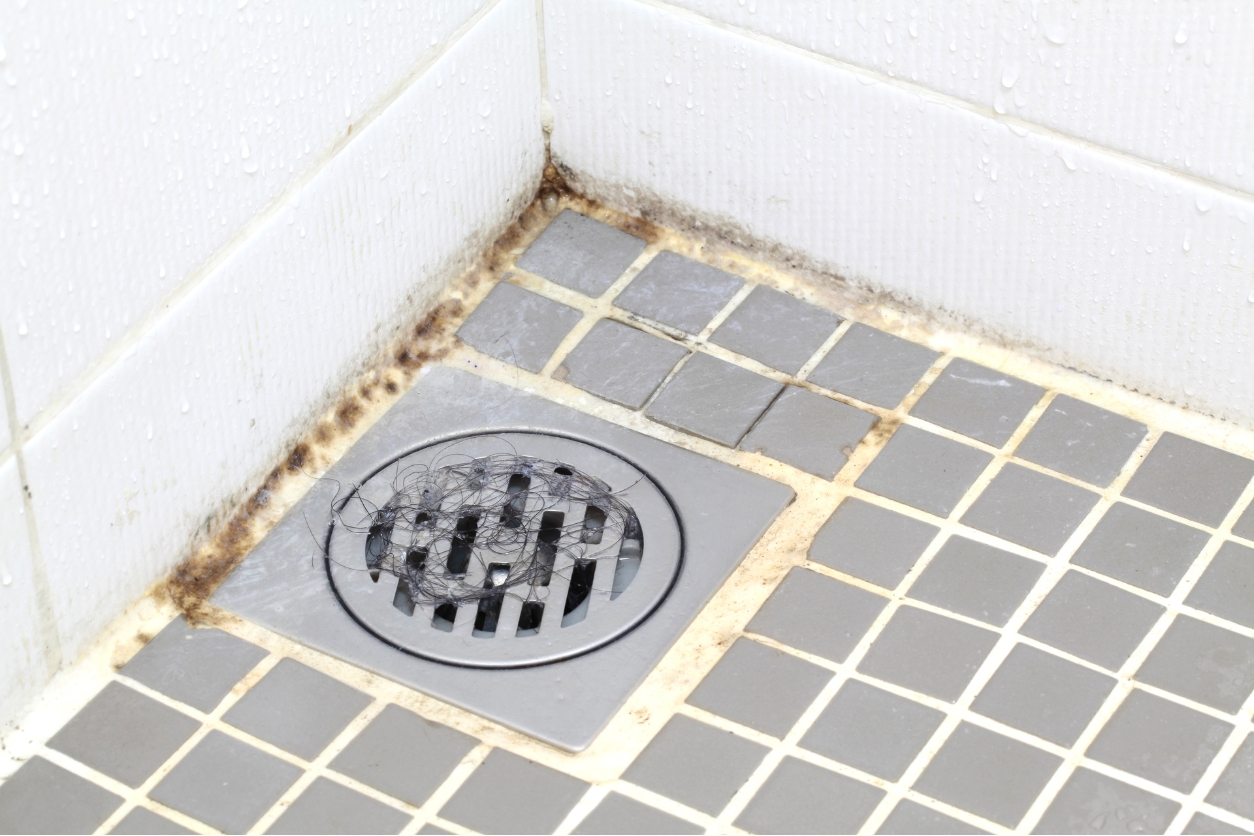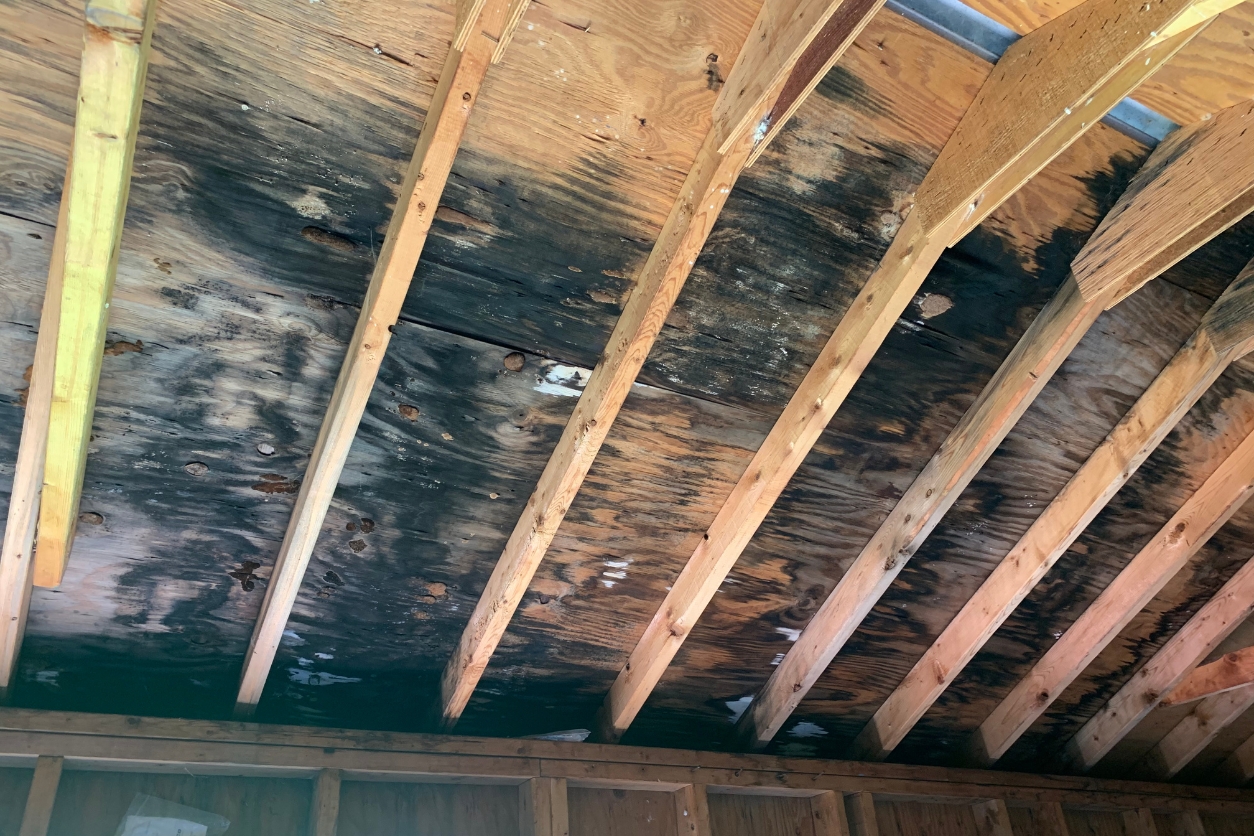How I Finally Got Rid of Black Mold Without Spending a Fortune

Getting rid of black mold isn’t exactly a task you wake up excited about. But if you’ve ever had to deal with it, you know it’s not something you can ignore. You start noticing that stubborn black stain in the corner of your bathroom or under your kitchen sink, and suddenly it’s a bigger problem than you thought.
Mold isn’t just an eyesore—it’s a potential health risk, especially when it comes to black mold, which can cause respiratory issues, headaches, and more if left untreated. It’s not something you want to delay fixing, and trust me, it’s something you can handle if you know the right methods.
Mold loves moisture, so any place where water lingers is a prime spot for growth. From the corners of your bathroom to the hidden spaces under the kitchen sink, black mold tends to show up in all the annoying, hard-to-reach places. Let’s learn how to get rid of black mold in different parts of your house and get your space back to feeling fresh and safe.
How to Get Rid of Black Mold on Walls and Ceilings
If you’ve ever walked into your bathroom and noticed black spots creeping up the walls or ceiling, especially in corners or along the edges, you’re likely dealing with black mold. High humidity, poor ventilation, and lack of airflow are common culprits. Whether it’s a bathroom ceiling or any other damp area in your home, learning how to get rid of black mold from these surfaces is crucial not only for the health of your home but for your own health as well.
Step 1: Prepare Your Cleaning Solution

The first thing you need to tackle black mold on walls or ceilings is a simple, effective cleaning solution. A regular household bleach works wonders here. Grab a spray bottle and fill it up with bleach—no need for fancy products. Bleach will break down and kill the mold effectively. Once you have your solution ready, you can move on to spraying the affected areas.
Step 2: Spray the Moldy Area
With your bleach-filled spray bottle, generously coat the mold-covered walls or ceilings. Focus on every inch of the affected area. If you notice mold growing in corners or along the ceiling edges, make sure those spots get extra attention. The goal is to thoroughly soak the mold so that the bleach has time to work its magic and kill the mold spores.
Leave the sprayed area alone for about 20 to 30 minutes. This downtime is crucial as it allows the bleach to penetrate the mold and kill it at the root. Make sure the room is well-ventilated during this process by keeping a window open—especially important when dealing with bleach, as it can release strong fumes.
Step 3: Wipe It Clean
Once the bleach has had time to sit and break down the mold, you’ll notice that much of the mold will have already lifted or disappeared. Now, take a clean rag and wipe down the treated area. This step ensures that you remove any remaining mold or bleach residue. The result is a cleaner, mold-free wall or ceiling.
How to Get Rid of Black Mold Under Kitchen Sink
The area under your kitchen sink is a breeding ground for black mold, especially if there’s been a slow leak you didn’t notice right away. The moisture combined with organic materials like wood or drywall is the perfect combination for mold to thrive. The first step in getting rid of black mold here is addressing the moisture source. Any leaks need to be fixed, whether it’s a loose faucet or water seeping through the countertops.
Once the water issue is handled, you’ll need a strong antimicrobial cleaner. Now, while some people might suggest using household cleaners like vinegar or baking soda, these won’t get deep enough into the affected materials to eliminate the mold entirely. You’ll want something more aggressive—an antimicrobial product designed specifically for mold removal. After spraying it onto the moldy area, let it sit for a few minutes to break down the biofilm, then wipe it away with a clean cloth.
If the mold has grown into the wood or drywall, these materials may need to be removed altogether. Mold can embed itself deep into porous materials, and surface cleaning won’t always solve the problem. When cutting out damaged sections, make sure to use protective gear like disposable gloves, a mask, and goggles to avoid inhaling mold spores. Also, don’t forget to set up a containment area with plastic sheeting to prevent the mold from spreading as you work.
How to Get Rid of Black Mold in Bathroom

Bathrooms are mold magnets thanks to all the moisture from showers and baths, especially in areas with poor ventilation. One common spot for mold growth is in the silicone sealant around showers and bathtubs. If you’ve ever noticed black spots creeping along the edges of your shower, that’s black mold taking root in the silicone.
A great way to tackle black mold in a silicone sealant is with bleach—yes, the good old-fashioned stuff. You’ll want to use gloves and ensure the room is well-ventilated since bleach can be harsh. To get started, roll up some kitchen paper or toilet paper into strips, soak them in bleach, and press them against the moldy silicone. Leave it on for 24 hours. When you peel it off the next day, you’ll see that the mold has faded significantly. If there’s still a little bit left, repeat the process until the mold is gone.
While bleach works well for cleaning silicone, you’ll want to check for any mold that might be lurking behind tiles or in other hard-to-see areas. If the mold keeps returning, it’s likely because there’s still moisture in the area. Installing a good bathroom fan or ensuring the space is well-ventilated can help prevent future growth.
How to Get Rid of Black Mold in Basement
Basements can be another challenging area when it comes to mold. The cool, damp environment creates the perfect atmosphere for mold to thrive, especially if your basement has issues with water seepage. If you spot black mold growing on the walls, floor, or ceiling, it’s time to roll up your sleeves and take action.
Start by identifying any water issues. If water is coming up through the floor or walls due to a high water table, you’ll need to address that before tackling the mold. Installing a vapor barrier or sealing the concrete with a penetrating sealant can help keep moisture out and stop mold from returning.
Once the moisture is under control, you can begin removing the mold. In basements, mold often grows on wood or concrete, so it’s crucial to use a product that penetrates deeply into these materials. A hydrogen peroxide-based cleaner is a great choice for these surfaces. It not only kills the mold but also helps to clean the surface thoroughly. Spray the affected areas, let the cleaner sit for a few minutes, and then scrub the mold away.
For large infestations, it’s a good idea to use HEPA filters or an air scrubber to capture any airborne mold spores during the cleaning process. Mold can easily become airborne when disturbed, and you don’t want it spreading to other parts of your home. Make sure to ventilate the area properly and wear protective gear while working.
How to Get Rid of Black Mold on Wood

Wood surfaces, whether they’re in the basement or part of your furniture, are particularly vulnerable to mold because wood is porous. When black mold starts growing on wood, simply wiping it down won’t be enough to get rid of the problem. You need a cleaner that can penetrate deep into the wood’s fibers.
One method that works well is using a borax solution. Mix one cup of borax with a gallon of water and apply it to the affected wood using a sponge or cloth. Let the solution soak into the wood for a few minutes to reach the mold’s roots, then scrub the surface with a brush. The borax will kill the mold and prevent it from coming back, making it a great long-term solution.
If the wood is heavily damaged or the mold has been present for a long time, you may need to sand the surface to remove all traces of the mold. However, this should only be done if the mold is on non-structural wood. If the mold has weakened any structural elements, it’s time to call in a professional to assess the damage.
Preventing Black Mold
Getting rid of black mold is one thing, but keeping it from coming back is an entirely different challenge. The key to preventing mold growth is controlling moisture. After you’ve cleaned the affected areas, make sure to address any leaks, improve ventilation, and reduce humidity levels in your home.
Using a dehumidifier can make a significant difference, especially in areas like basements, where moisture tends to build up. In bathrooms, install an exhaust fan if you don’t already have one, and use it every time you shower to keep the air dry.
Regularly checking for leaks under sinks, around windows, and near any plumbing can help you catch moisture issues before they turn into full-blown mold problems. If you live in a humid climate, consider investing in mold-resistant paint for walls in mold-prone areas like basements and bathrooms.
Decades of Combined Expertise
Best Buy Guidebook is a culmination of online publishing lessons learned. From SEO to paid ads, our team has experienced the highest of highs and the lowest of lows. Our goal now is simple: Arm readers with the most information possible.
